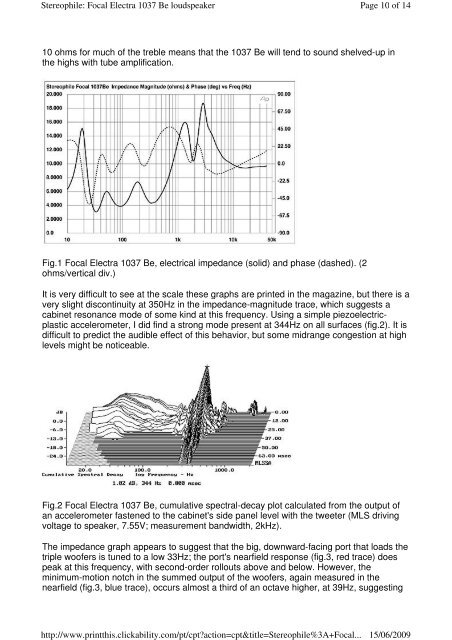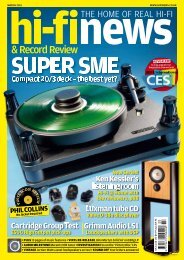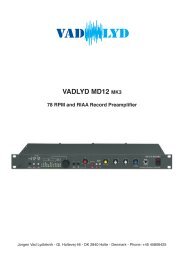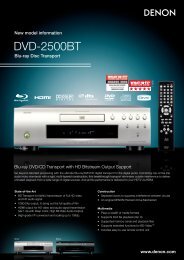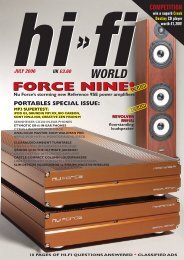Floorstanding Loudspeakers Focal Electra 1037 Be ... - Sound Hi Fi
Floorstanding Loudspeakers Focal Electra 1037 Be ... - Sound Hi Fi
Floorstanding Loudspeakers Focal Electra 1037 Be ... - Sound Hi Fi
You also want an ePaper? Increase the reach of your titles
YUMPU automatically turns print PDFs into web optimized ePapers that Google loves.
Stereophile: <strong>Focal</strong> <strong>Electra</strong> <strong>1037</strong> <strong>Be</strong> loudspeaker<br />
http://www.printthis.clickability.com/pt/cpt?action=cpt&title=Stereophile%3A+<strong>Focal</strong>...<br />
Page 10 of 14<br />
15/06/2009<br />
10 ohms for much of the treble means that the <strong>1037</strong> <strong>Be</strong> will tend to sound shelved-up in<br />
the highs with tube amplification.<br />
<strong>Fi</strong>g.1 <strong>Focal</strong> <strong>Electra</strong> <strong>1037</strong> <strong>Be</strong>, electrical impedance (solid) and phase (dashed). (2<br />
ohms/vertical div.)<br />
It is very difficult to see at the scale these graphs are printed in the magazine, but there is a<br />
very slight discontinuity at 350Hz in the impedance-magnitude trace, which suggests a<br />
cabinet resonance mode of some kind at this frequency. Using a simple piezoelectricplastic<br />
accelerometer, I did find a strong mode present at 344Hz on all surfaces (fig.2). It is<br />
difficult to predict the audible effect of this behavior, but some midrange congestion at high<br />
levels might be noticeable.<br />
<strong>Fi</strong>g.2 <strong>Focal</strong> <strong>Electra</strong> <strong>1037</strong> <strong>Be</strong>, cumulative spectral-decay plot calculated from the output of<br />
an accelerometer fastened to the cabinet's side panel level with the tweeter (MLS driving<br />
voltage to speaker, 7.55V; measurement bandwidth, 2kHz).<br />
The impedance graph appears to suggest that the big, downward-facing port that loads the<br />
triple woofers is tuned to a low 33Hz; the port's nearfield response (fig.3, red trace) does<br />
peak at this frequency, with second-order rollouts above and below. However, the<br />
minimum-motion notch in the summed output of the woofers, again measured in the<br />
nearfield (fig.3, blue trace), occurs almost a third of an octave higher, at 39Hz, suggesting


